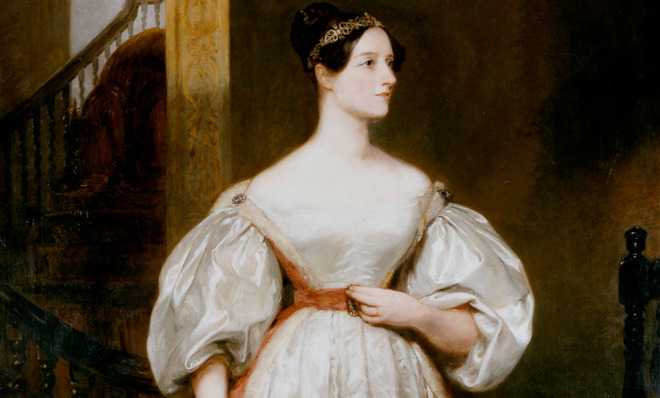The women who shaped the computer age
Women have been playing essential roles in the digital age from the very start


One key element of The Innovators, Walter Isaacson's new book on technological history and culture — and the focus of an upcoming World Science Festival event — is the unsung contributions that women have been making since the earliest days of computers. The book opens and closes with Ada Lovelace, who channeled her imagination and gift for numbers into a love for "poetical science" (apropos, given that she was the daughter of Lord Byron) and is often recognized as the author of the first computer program.
The history of women and computers is hard to compile, because many key contributions will never be known. But even those chapters we do know highlight the fact that women have been playing essential roles in the digital age from the very start — and, like Ginger Rogers mirroring Fred Astaire's steps backward in high heels, doing so despite the extra work required for them to legitimize themselves.
(More from World Science Festival: There'd be no Steve Jobs without Grace Hopper)
The Week
Escape your echo chamber. Get the facts behind the news, plus analysis from multiple perspectives.

Sign up for The Week's Free Newsletters
From our morning news briefing to a weekly Good News Newsletter, get the best of The Week delivered directly to your inbox.
From our morning news briefing to a weekly Good News Newsletter, get the best of The Week delivered directly to your inbox.
20th-century computing began as a woman-dominated field. Before electronic computers gained prominence, a "computer" was actually a job description, for a woman or man who used a mechanical calculator to solve equations. Mathematically trained women were hired as computers more often then men because employers could pay them less. In World War II, women computers helped crunch numbers that allowed soldiers to aim artillery guns and helped scientists at the Manhattan Project develop the atomic bomb. But shifting social forces caused female participation in computing to take a nosedive after the war ended, as MIT science historian Jennifer Light explains.
"After WWII, as men returned from the conflict and women were encouraged to retreat to domestic life, women left computing along with many of the scientific and engineering fields in which they'd participated during the war," Light wrote in an email. "There were a number of postwar computing projects that did include female programmers, for example the IAS Computer Project at the Institute for Advanced Study in Princeton. But in general during the 1950s, the increasingly recognized importance of programming (previously seen as a clerical occupation and hence as 'women's work'), combined with these other social forces led to a situation in which women were not widespread participants in the computing fields."
Still, some women forged ahead in the postwar period. Grace Hopper made the first compiler (and popularized the term 'debugging,' after fishing a moth from the innards of Harvard's Mark I computer). IBM's Frances Allen found new ways to optimize compilers. Six female programmers were selected to help assemble and program the first electronic computer, ENIAC; their names are, sadly, lost to history. Meanwhile in Britain, Stephanie Shirley (who sometimes adopted the name "Steve" in business transactions) and Elsie Shutt started software companies in the late 1950s and early 1960s.
(More from World Science Festival: The biochemistry of autumn colors)
A free daily email with the biggest news stories of the day – and the best features from TheWeek.com
Shirley and Shutt "both completely independently came up with the business model of employing other female programmers, working at home part time," Virginia Tech science historian Janet Abbate says. "And they figured out the management techniques to make it work."
Keep in mind that at the time that Shirley and Schutt were starting up their businesses, women couldn't even get bank accounts in their own names in England. That was an obstacle Steve Jobs never had to face, Abbate notes.
Celebrating women pioneers isn't the only step needed to create a welcoming environment for women, and the problem isn't that men in technology refuse to acknowledge the contributions of certain outstanding women like Lovelace, Hopper, and Shirley. "More problematic is the resistance to acknowledging the important social and structural factors that have historically kept women out of computing," Light says. "It is much easier to celebrate the few who succeed in hostile or sexist environments as exceptions than it is to acknowledge widespread problems and subsequently to reform those environments."
Silicon Valley sexism is a perennial headline-maker, whether its sexual harassment from colleagues or investors, or workplaces that are overwhelmingly male and white. Gestures at accommodating women, like company-covered egg freezing, a recently added perk for Facebook and Apple employees, seem more aimed at maximizing office hours than generating true work-life balance.
(More from World Science Festival: How quantum computing could change everything)
"In some ways we're still trying to shape women to this inflexible workplace culture rather than saying, 'why don't we put everything on the table and rethink it?'" Abbate says. "Why not introduce more flexibility, allow people to take time off without completely losing their place on their career path?"
Making workplaces welcoming to women isn't just a matter of political correctness, Abbate says. If the tech world persists in perpetrating a narrow view of who can be a computer programmer, "we're not only turning away people who can contribute, we're depriving the computing industry of really valuable things."
-
 Trump’s poll collapse: can he stop the slide?
Trump’s poll collapse: can he stop the slide?Talking Point President who promised to ease cost-of-living has found that US economic woes can’t be solved ‘via executive fiat’
-
 Codeword: December 7, 2025
Codeword: December 7, 2025The daily codeword puzzle from The Week
-
 Sudoku hard: December 7, 2025
Sudoku hard: December 7, 2025The daily hard sudoku puzzle from The Week